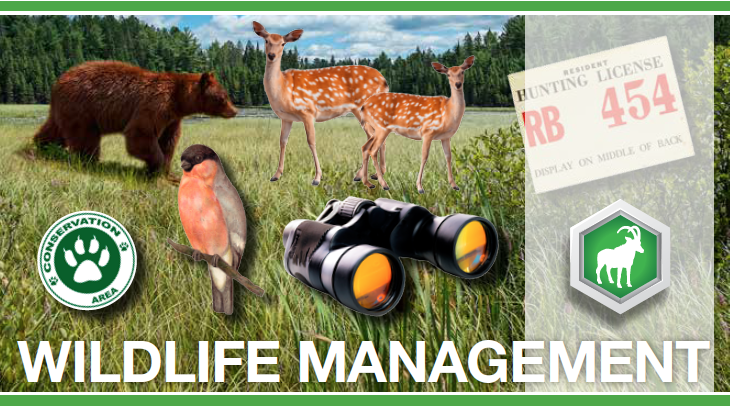- This topic is empty.
- AuthorPosts
- January 21, 2025 at 11:15 pm #543201

The relationship between humans and wildlife is intricate and vital for the health of our ecosystems. The concept of wildlife encompasses all living organisms that exist in their natural habitats, including mammals, birds, reptiles, amphibians, and plants.
As the human population grows and habitats are altered, the need for effective wildlife management becomes increasingly important.
This article will explore the principles of wildlife concept and management, highlighting its significance for biodiversity, ecosystem health, and human welfare.
1. Defining Wildlife and Its Importance
Wildlife refers to all living organisms that are not domesticated, encompassing a wide range of species and their habitats.
The importance of wildlife extends beyond its aesthetic and recreational value; it plays a crucial role in maintaining ecological balance.
Wildlife contributes to ecosystem services such as pollination, seed dispersal, and pest control, which are essential for agriculture and natural environments.
Additionally, wildlife is integral to cultural identities and traditions around the world, providing spiritual and economic benefits to many communities.
2. The Principles of Wildlife Management
Wildlife management is a scientific approach aimed at sustaining and enhancing wildlife populations while balancing human interests.
Key principles of wildlife management include conservation, restoration, and sustainable use. Conservation focuses on protecting habitats and ecosystems to ensure the survival of species.
Restoration involves rehabilitating degraded habitats to support wildlife populations. Sustainable use emphasizes the responsible harvesting of wildlife resources, ensuring that populations remain viable for future generations.
These principles guide the development of policies and practices that promote coexistence between humans and wildlife.
3. Challenges Facing Wildlife Management
Wildlife management faces numerous challenges that threaten both species and their habitats. Habitat loss due to urbanization, agriculture, and deforestation is one of the most pressing issues, leading to declines in biodiversity.
Climate change also poses significant risks, altering habitats and affecting species distributions. Additionally, illegal poaching and wildlife trafficking contribute to the decline of many species, disrupting ecosystems and local economies.
Effective wildlife management must address these challenges through integrated approaches that consider ecological, social, and economic factors.
4. Tools and Techniques in Wildlife Management
To effectively manage wildlife populations, various tools and techniques are employed. These include population monitoring, habitat assessment, and the implementation of protected areas.
Population monitoring involves tracking species numbers and health to inform management decisions. Habitat assessments help identify critical areas for conservation and restoration efforts.
Protected areas, such as national parks and wildlife reserves, serve as safe havens for many species, allowing ecosystems to thrive without significant human interference.
Additionally, community engagement and education play crucial roles in fostering a culture of conservation and promoting sustainable practices.
5. The Role of Communities in Wildlife Management
Communities are essential stakeholders in wildlife management, as they often live in close proximity to wildlife and depend on natural resources for their livelihoods.
Engaging local communities in management efforts can lead to more effective and sustainable outcomes. When communities are involved in decision-making processes, they are more likely to support conservation initiatives and adopt sustainable practices.
Moreover, traditional ecological knowledge held by indigenous peoples can provide valuable insights into wildlife behaviors and habitat management.
Collaborative approaches that empower communities can enhance the success of wildlife management strategies.
In conclusion, the concept of wildlife and its management is critical for maintaining ecological balance and ensuring the survival of diverse species.
By understanding the importance of wildlife, the principles of effective management, and the challenges faced, we can develop strategies that promote coexistence between humans and nature.
With the involvement of local communities and the application of innovative techniques, we can work towards sustainable wildlife management that benefits both people and the environment.
Embracing this holistic approach will be essential for protecting our planet’s precious wildlife for generations to come.
Read Also: Park Protection/Law Enforcement as a Tool of Wildlife Management
- AuthorPosts
- You must be logged in to reply to this topic.

